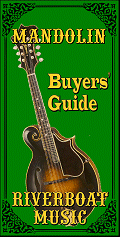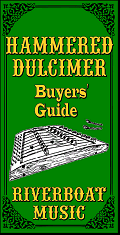Acoustic Instrument
Primers
What Kind of Guitar
Should I Start On?
What Kind of Banjo
Do I Want?
Evaluating and
Buying Used
Guitars
Setting Up
Fretted Instruments Whatever Happened
to the Banjo?
Beginning Five-
String Banjo
6-String Banjos
Banjo Pickups
What is a
Bluegrass Banjo?
What is a
Tenor Guitar?
Dean "Backwoods
Six" Shootout
Axes in my Life
Music Theory
Primers
Introduction
to Scales
Introduction
to Chords
Circle of Fifths
Other Articles
About Music
How to Give
Guitar Lessons
Musician or
Wannabe? Did God Really
Give Rock &
Roll to You?
Are You a
"Brand Bigot"?
Who Owns Folk Songs?
Historical Links
About the
National Road
The Story Behind
the Story - Real
People, Places,
and Events
About the Play
Play Home
What's New
Overview
About the
Music
About the
History
About the
Logistics
About the
Cast
Synopsis
About the
Set
About the
Author
Contact Us
Home

|

|



 The Circle of Fifths Part 2: Beyond Three-Chord Harmonies
The Circle of Fifths Part 2: Beyond Three-Chord Harmonies
Creek Don't RiseTM and School Of The RockTM |
Our article Circle of Fifths, Part 1 outlines the basic relationships among chords in a given key, focusing on the I, IV, V or 1, 4, 5 chords in the typical 3-chord song. Internalizing such relationships is critical to being considered a guitar player in any contemporary sense.
This page should help you see the relationships among the other commonly used chords.
Remember:
Most songs in modern music use at least those three chords. Many only use those. Many of those songs COULD use other chords to make things more interesting. But there are many songs that REQUIRE other chords.
In any key there are probably something like 48 possible chords. We will only focus on the chords you're most likely to encounter in most modern music. We also recommend that you read this page with a guitar in hand, so you can HEAR how these chords work in relationship to each other.
Besides, the tonic, dominant, dominant 7th, and subdominant, you are likely to encounter (or find useful) the following chords:
Some songs, like "Greensleeves" ("What Child is This"), go back and forth between the minor and the relative major (for "Greensleeves" it's usually Em and G). One very common use of the relative minor in 50s and early 60s pop music is in songs like "Breaking Up is Hard to Do" that go C, Am, F, G7 (or G, Em, C, D7, if you're in the key of G).
That said, the most common secondary dominant progression is typically a major second (with flatted seventh) leading to the dominant (such as a C, F, D7, G7 progression).
In many cases, though, a fourth note is added, a sort of seventh. So, as often as not, a guitarist may play Bdim (B, D, F) as Bdim7 (B, D, F, Ab). Some composers use diminished sevenths to transition up a third. So a song in the key of C might go to a Bdim7, then go to Eb. Again, you won't see this often, but now you have some idea why it might be used.
Augmented chords do not occur as part of normal harmonic progression, but we'll add them here in case you bump into one. An augmented chord sharpens the highest note of a triangle. So a C chord C, E, G, becomes an augment chord by sharpening the G - giving you C, E, G#. In Tin Pan Alley songs and some jazz standards, an augmented chord is used as a transtion between the tonic and subdominant. C, CAug, Eb.
Again, right-clicking on the little picture to the right, and selecting "Save Target As" or however your browser phrases it, then opening it on your hard drive and printing it, will usually get you the best results, since some browsers don't display the thing properly, which means they usually won't print it properly either.
Listen for the obvious uses of these chord relationships when you hear songs on the radio. Study the way they're used as you learn new songs to play.
I've also had friends ask me how I can play along confidently on songs I've never heard before. When I try to explain that all chords in a song are related, and they tend to work together in predictable ways, their eyes glaze over. When I give them a circle of fifths chart and try to explain how memorizing twelve - get it twelve - chord names in sequence can change their entire musical outlook, they shake their heads and say there "must be an easier way."
Hopefully something we've said will stick with you, and, even if it doesn't make sense now, it will "click" at some point in the future.
In the meantime, paying attention to how chords work together will take you a very long way toward becoming a good accompanist, improviser, performer, and possibly composer.
Whatever you do enjoy your music!
Paul Race, www.CreekDontRise.com
Showing the Circle of Fifths Sideways
For simplicity's sake, the following chart shows ONLY the keys in which you can play the tonic in open chords on guitar. They are shown in fifths so you can see the relationships between the keys from F to E: F, C, G, D, A, E. If you pick the key in which you are playing, you can easily find the other chords that are mostly likely to be used in that key.
Tonic (1st, Major) Dominant (5th, Major) Dominant 7th Subdominant (4th, Major) Relative Minor (6th, minor) Second (2nd, minor) Third (3rd, minor) Diminished Seventh (7th, Diminished)  Once again, most of the information above is in the handy "Magic Circle of Fifths Wheel" from part one. Except it goes through all the sharps and flats, and not just the ones you're likely to play in Rock, Pop, Folk, Country, or Bluegrass bands.
Once again, most of the information above is in the handy "Magic Circle of Fifths Wheel" from part one. Except it goes through all the sharps and flats, and not just the ones you're likely to play in Rock, Pop, Folk, Country, or Bluegrass bands.
Conclusion
I've had the privilege several times in my life of playing with people who knew this stuff. All somebody had to tell us was what key the next song was going to be in, and we never looked back. Not always easy keys, either. Friends would try to join in, then freak out when they learned there wasn't a sheet of music, or even a lead sheet or lyric/chord sheet among us. Was it magic? Was it divine inspiration? No, it was music theory, mostly knowing scales and chords. None of us were rocket scientists; only a few of us had studied music seriously, but we learned what we had to.


All material, illustrations, and content of this web site is copyrighted © 2001, 2002, 2003, 2004, 2005, 2006,
2007, 2008, 2009, 2010, 2011, 2012, 2013, 2014, 2015, 2016 by Paul D. Race. All rights reserved.
Creek Dont' Rise(tm) is a participant in the Amazon Services LLC Associates Program, an affiliate advertising
program designed to provide a means for sites to earn advertising fees by advertising and linking to Amazon.com.
Note: Creek Don't Rise (tm) is Paul Race's name for his resources supporting the history and
music of the North American Heartland as well as additional kinds of acoustic and traditional music.
For questions, comments, suggestions, trouble reports, etc. about this play or about this web page, please contact us.
| Visit related pages and affiliated sites: | ||||||
| - Music - | ||||||

|
 |
 |

|

|

|
|

|

|

|

|

|

|
|
| - Trains and Hobbies - | ||||||
 |

|

|  |
 |

|
|
| - Christmas Memories and Collectibles - | ||||||
 |

|
 |

|
 |

|
|
| - Family Activities and Crafts - | ||||||
 |

|

|

|

|

|
|